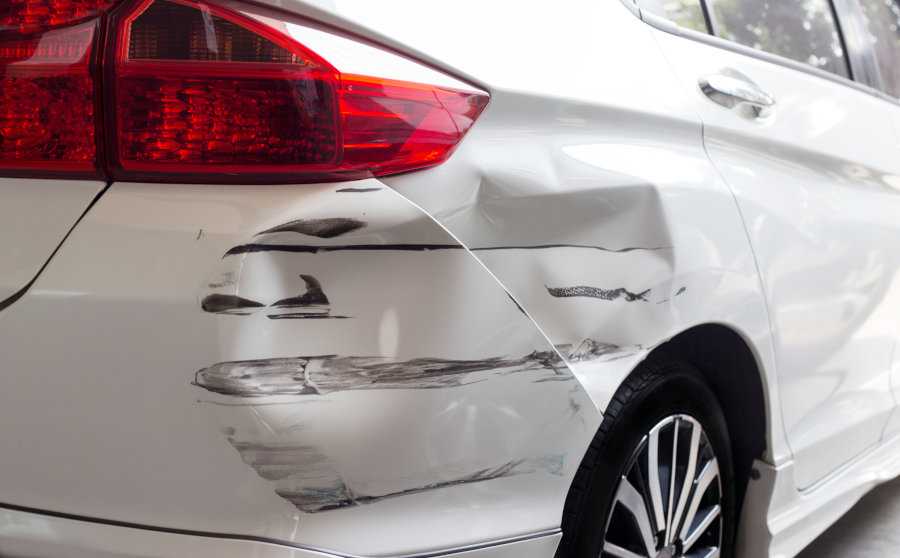
Hit and Run in California – California Vehicle Code §20001, §20002 and §20003
It is illegal in California to be in an accident that injures another or causes property damage without informing the other party involved in the accident of their identity. Being involved in an accident and then leaving can be considered a hit and run offense. If you are facing hit and run charges in California, it is important that you understand the nature of the charges against you, the potential consequences of conviction and the possible defenses that you may be able to raise.
Felony or Misdemeanor
A hit and run offense can be charged as a felony or misdemeanor in California. The extent of the damage determines whether the offense is charged as a misdemeanor or felony. When the accident only involves property damage, it is charged as a misdemeanor offense.1 According to California’s misdemeanor law, a driver has the legal duty to perform the following actions2 when he or she is involved in an accident that involves property damage:
- Stop your vehicle immediately
- Provide the other party with your name and contact information
- Provide the other party with your driver’s license and registration upon request
- Provide the other party with the vehicle owner’s name and contact information if the driver in the accident did not own the vehicle3
If the accident resulted in the injury of someone else other than the defendant, the crime is considered a felony.4
Proving a Hit and Run Case
In order for the prosecution to prove a hit and run case, it must establish each element of the crime by proof beyond a reasonable doubt. The prosecution must prove that there was damage or that the victim was injured. Additionally, the prosecution must establish that the defendant failed to exchange information. If the individual left his or her contact information even though he or she left the scene of the accident, the acts will not rise to the level of a hit and run in California.
It is important to note that a person can be charged with hit and run in California even if he or she was not responsible for the accident. The criminal act is in not leaving contact information after being involved in an accident. Additionally, even if the only individuals who were injured were in the defendant’s vehicle, a charge of this nature can still arise.
Penalties
Individuals who are charged with misdemeanor hit and run face a maximum sentence of six months in county jail and a fine up to $1,000.5The potential penalties for a felony hit and run include imprisonment in a state prison for two to four years or county jail for 90 days to one year and a fine between $1,000 and $10,000.6 The actual sentence that is imposed depends on the extent of the injuries caused to the victim.
Civil Compromise
In some situations, the prosecutor may accept a civil compromise rather than pursuing criminal action against the defendant. In a civil compromise, the victim and the defendant agree to drop the criminal charges, and the defendant agrees to reimburse the victim for his or her damages. The defendant’s criminal defense lawyer may present the civil compromise to the court to show that the defendant acknowledged his or her actions and took responsibility by paying the damages he or she caused. This is one approach that a criminal defense lawyer may use to try to get the charges dismissed. However, it is ultimately up to the prosecutor to determine whether or not to pursue a case.
Defenses to Hit and Run
There may be a number of legal defenses to charges of hit and run. The first type of defense is to attack the elements of the crime, such as:
- Damages – A hit and run charge can only stand when there have been actual damages to some property. The victim’s vehicle could have already had scratches or damage to it from a prior accident. While a misdemeanor charge may still be filed if the property damage was to a stop sign, sidewalk or property not belonging to the victim, it cannot be filed when the only damage is to the defendant’s own vehicle.
- No contact information – The prosecution must show that the defendant did not leave his or her contact information. The defendant may argue that he or she left contact information on the vehicle. The contact information may have gotten lost or blown away, such as if the contact information was left on the vehicle’s windshield.
Another potential defense may be that emergency circumstances arose. For example, the defendant may have left the scene of the accident without leaving contact information because he or she was seeking medical attention for himself, herself or other passengers. In other situations, the defendant may not have been aware that he or she hit another vehicle and neglects to notify the other vehicle’s owner because he or she did not know of any damage.
References:
1 California Vehicle Code 20002 – California Vehicle Code 20002 VC – Duty where property damaged [Misdemeanor hit and run]. (“(a) The driver of any vehicle involved in an accident resulting only in damage to any property, including vehicles, shall immediately stop the vehicle at the nearest location that will not impede traffic or otherwise jeopardize the safety of other motorists. Moving the vehicle in accordance with this subdivision does not affect the question of fault. The driver shall also immediately do either of the following: (1) Locate and notify the owner or person in charge of that property of the name and address of the driver and owner of the vehicle involved and, upon locating the driver of any other vehicle involved or the owner or person in charge of any damaged property, upon being requested, present his or her driver’s license, and vehicle registration, to the other driver, property owner, or person in charge of that property. The information presented shall include the current residence address of the driver and of the registered owner. If the registered owner of an involved vehicle is present at the scene, he or she shall also, upon request, present his or her driver’s license information, if available, or other valid identification to the other involved parties. (2) Leave in a conspicuous place on the vehicle or other property damaged a written notice giving the name and address of the driver and of the owner of the vehicle involved and a statement of the circumstances thereof and shall without unnecessary delay notify the police department of the city wherein the collision occurred or, if the collision occurred in unincorporated territory, the local headquarters of the Department of the California Highway Patrol. (b) Any person who parks a vehicle which, prior to the vehicle again being driven, becomes a runaway vehicle and is involved in an accident resulting in damage to any property, attended or unattended, shall comply with the requirements of this section relating to notification and reporting and shall, upon conviction thereof, be liable to the penalties of this section for failure to comply with the requirements.
2 California Vehicle Code 20002(c) – “Any person failing to comply with all the requirements of this section is guilty of a misdemeanor.
3 California Vehicle Code Section 20002(a) – “The driver of any vehicle involved in an accident resulting only in damage to any property, including vehicles, shall immediately stop the vehicle at the nearest location that will not impede traffic or otherwise jeopardize the safety of other motorists . . . The driver shall also immediately do either of the following: (1) Locate and notify the owner or person in charge of that property of the name and address of the driver and owner of the vehicle involved and, upon locating the driver of any other vehicle involved or the owner or person in charge of any damaged property, upon being requested, present his or her driver’s license, and vehicle registration, to the other driver, property owner, or person in charge of that property. The information presented shall include the current residence address of the driver and of the registered owner. If the registered owner of an involved vehicle is present at the scene, he or she shall also, upon request, present his or her driver’s license information, if available, or other valid identification to the other involved parties. (2) Leave in a conspicuous place on the vehicle or other property damaged a written notice giving the name and address of the driver and of the owner of the vehicle involved and a statement of the circumstances thereof and shall without unnecessary delay notify the police department of the city wherein the collision occurred or, if the collision occurred in unincorporated territory, the local headquarters of the Department of the California Highway Patrol.”
4 California Vehicle Code Section 20001 – Duty to stop at scene of injury accident; penalties [Felony hit and run].
5 California Vehicle Code 20002(c) – “Any person failing to comply with all the requirements of this section is guilty of a misdemeanor and, upon conviction thereof, shall be punished by imprisonment in the county jail not exceeding six months, or by a fine not exceeding one thousand dollars ($1,000), or by both that imprisonment and fine.”
6 See California Vehicle Code 20003.
